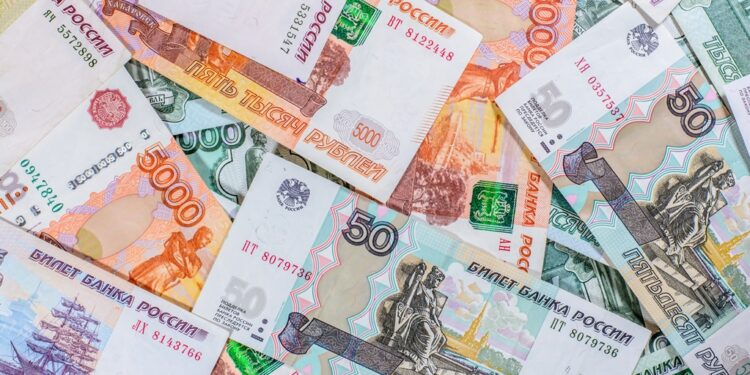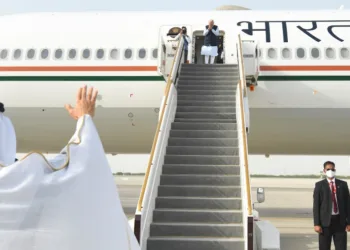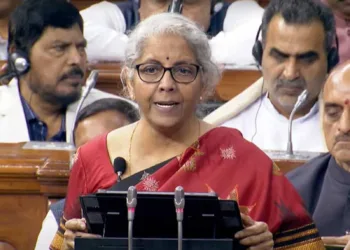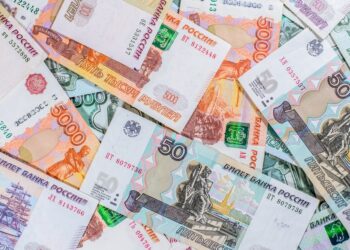The India-Russia arrangement to trade through rupeerouble exchange is encouraging others like Sri Lanka to join the rupee trade settlement mechanism
By Kumud Das
Russia and India have recently mutually agreed to drop all use of the US dollar and euro in bilateral settlements and replace it with rupee-rouble trade.
The idea is to promote the national currencies in trade between the two countries. True, there are challenges in realising this on the ground. However, if the roadblocks are removed it will help in several ways. For one, the rupee will become an international currency. Secondly, it will boost trade between the two countries.
Above all, by doing this, both countries will be able to do away with their dependency on the US dollar for trade.
What are the implications involved?
Even though the transition to national currencies is a fundamental decision, there is a need to strike a balance. The reason is the fact that the sales volume of Russian products in India is five times higher than the reverse.
As of now, the rupee is only a partially convertible currency, which has so far made it unattractive for use in foreign trade settlements. However, things are likely to progress faster in a positive direction. If all goes well, the Government of India may contemplate making the rupee fully convertible in the forthcoming Budget, which is slated for presentation on February 1. Once it happens, the rupee in a full float model will acquire international currency status.
Hariharan M.V., retired DGM, SBI, puts it this way: “If many small banks like UCO and United Bank of India are able to save the government and transact with Russians by trading in the rupee, then the pressure of cross-currency on the rupee will come down. Another important thing is that the rupee will become very similar to the existing international currencies. Currently, the rupee is not fully floating. It is only partially convertible at the moment.
The government has taken the decision and it may be announced in the forthcoming Budget that the rupee is ready for full float. Then it will become an international currency. If India is able to convince Russia that its domestic purchasing power is so strong that it could withstand any attack on the currency, the rupee will become a symbol of an Atmanirbhar Bharat.”
The good news is that six Indian banks have so far received permission from the Indian government to open correspondent accounts in rupees with Russian banks to facilitate bilateral trade and arrange rupee-rouble ‘Vostro’ account transactions. Russia and India bilateral trade turnover is also growing rapidly. It assumes significance in view of the fact that India is currently negotiating a Free Trade Agreement with the Eurasian Economic Union—a deal which includes Russia.
Bilateral trade growth, however, is not just a result of cheap oil due to the Ukraine conflict. At the end of 2021, growth was already running at 46.5 percent in non-oil trade. Here it is important to note that for a major chunk of crude oil consumption, India is dependent on Russia at present.
Again, more than 70 percent of India’s imported oil comes via Gujarat, meaning cooperation is increasing besides the development of oil refining and petrochemicals, and access to the re-sale markets of the Asia-Pacific. Cooperation in this area will open doors for related Russian industries.
Other subsidiary industries are also taking off here—Indian and Russian shipbuilders are constructing new tankers, some of them with Arctic capabilities, again at the Gujarat shipbuilding yards, and cooperating in the leasing and construction of large bulk crude carriers.
If one looks at the results of the first half of the year, the trade turnover between Russia and India grew to $11 billion, and there were already plans to increase this to $30 billion by 2025.
Now, have a look at these statistics. India’s middle class formed 31 percent of the total population in the fiscal year 2021-22, about 500 million people. The number of “super rich”, on the other hand, rose to 1.8 million in 2020-21. Maharashtra was India’s richest state, followed by Delhi and Gujarat. The fundamental impact on the economy of Russia will be the growth of opportunities for exporting its products to other countries, including India.
Anil Kumar Bhansali, head of treasury, Finrex Treasury Advisors, says, “India’s crude oil imports will be to the tune of $180 billion in FY22-23. Of which we are importing about 20 percent from Russia. This is about $36 billion. If this $36 billion is settled in rupees, it will reduce our trade deficit by that much. However, our exports will also be invoiced in rupees so that will also come down. But if we are able to do this with oil exporting countries, it will surely reduce pressure on the dollar. We will not be requiring the dollars that we normally require for our oil purchases.”
There will be long-term implications as we will not be dependent on the dollar for our requirements and the pressure on one currency, which forms 80 percent of our currency requirement, will come down. This is not possible in a year or two but is something longterm. It is more like the barter system earlier. This appears one of the biggest changes that could happen in the next decade with most countries adopting this system to come out of dependence on one or two currencies, says Bhansali.
Yet another challenge is the fact that over the past five years, the rupee has fallen by about 30 percent in value—partly due to export of goods to Russia from India, as well as an increase in Russian investment in Indian real assets.
Various other schemes are being tried: the System for Transfer of Financial Messages (SPFS), the Russian analogue to SWIFT, which allows transfers to bypass sanctions and restrictions, and the introduction of the Russian MIR card system could be utilised.
In any event, the use of the US dollar and the euro in foreign economic activity is decreasing as a result. The share of the dollar in global trade decreased by 40 percent and of the euro by 30 percent in 2022. Growth calculations are in alternative currencies, including the Chinese yuan, Turkish lira, Iranian rial, Indian rupee and other national currencies.
Using India’s rupee to trade is being taken up by other countries. Sri Lanka has agreed to use it to trade with Russia, with Sri Lankan banks also reportedly opening special rupee trading accounts called Special Vostro Rupee Accounts or SVRA for trading in the Indian rupee.
This comes days after the Government of India said it is looking at ways to bring countries that are particularly short of dollars into the ambit of the Indian rupee trade settlement mechanism. The Central Bank of Sri Lanka (CBSL) said it is awaiting Reserve Bank of India (RBI) approval to designate the Indian rupee as a foreign currency of Sri Lanka.
With the opening of Vostro accounts, people in Sri Lanka can now hold $10,000 (₹8,26,823) in physical form. Also, Sri Lankans and Indians can use Indian rupees instead of US dollars for international transactions between each other. Sri Lanka also wants to buy inexpensive Russian oil and this structure will help.
India’s energy needs to power its development are running at rates of 3 percent per annum in Stated Policies Scenario (STEPS) from now until 2030, according to the International Energy Agency (IEA). Russia is instrumental in this—meaning trade doors will continue to open as Russia is also looking for new markets to replace Western consumers.
(The writer is a Mumbai-based senior business journalist.)








